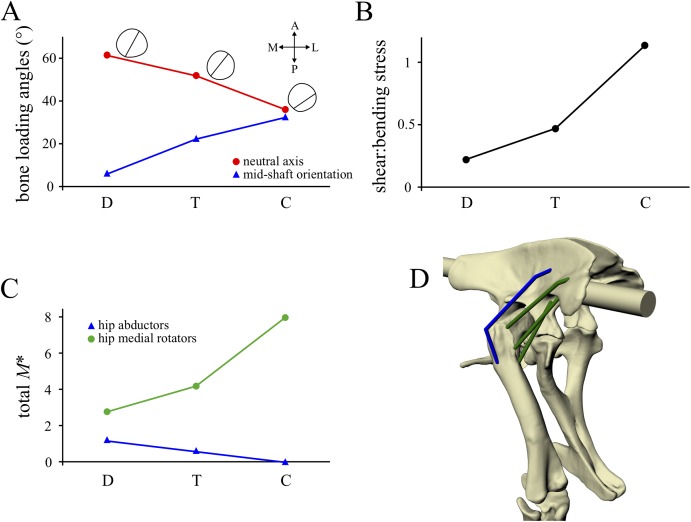Figure 14. Comparison of parameters related to bone loading mechanics and muscular support, extracted from the solution postures of the three species modelled: Daspletosaurus (‘D’), ‘Troodon’ (‘T’) and the chicken (‘C’).
(A) Orientation of the neutral surface of bending and the orientation of principal stresses (σ1 and σ3) relative to the femur long-axis, both measured at mid-shaft. Insets show the neutral surface with respect to the mid-shaft cross-section, as well as anatomical directions (‘A’, anterior; ‘P’, posterior; ‘M’, medial; ‘L’, lateral). (B) Ratio of maximum shear to bending stress in the femoral mid-shaft. (C) Normalized moments of hip abductor and medial rotator muscles. The hip abductor for all species is the iliofemoralis externus (activation set to zero in the chicken; see Part II). In Daspletosaurus and ‘Troodon’, the medial rotators are the iliotrochantericus caudalis and puboischiofemorales internus 1 et 2; in the chicken, they are the iliotrochanterici caudalis et medius. (D) Oblique anterolateral view of the hip of Daspletosaurus, showing the abductor and medial rotator muscles (colours as in C).

